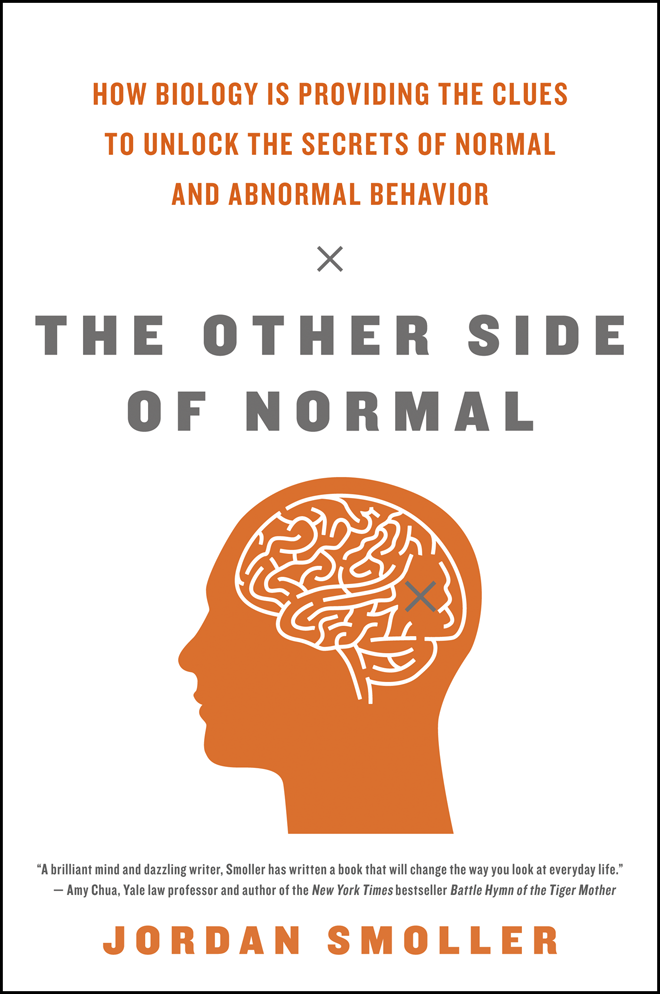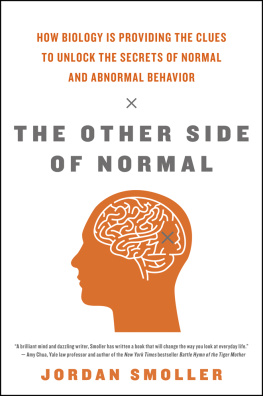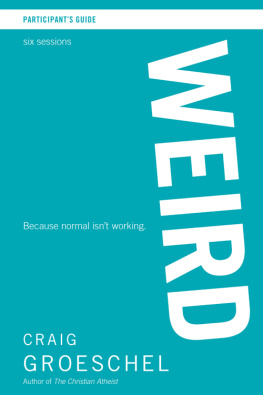
For Ava
Contents
... [The] intellect suffers to pass unnoticed those considerations which are too obtrusively and too palpably self-evident.
E DGAR A LLAN P OE , T HE P URLOINED L ETTER
E VERY DAY YOU LOOK AT SOMETHING RIGHT IN FRONT OF your eyes and yet you never see it. Your retina, the part of your eye that picks up visual information, sits behind a network of blood vessels at the back of the eye. This vascular window shade is so obvious and ever-present that the brain has had to make it invisible, creating a latticelike blind spot that is filled in by the mind. Like the purloined letter of Poes tale, many of the most fundamental features of the normal mind have been hidden in plain sight. They are so basic to what we do, think, and feel, that we hardly give them a thought. And, until recently, they have been relatively invisible even to scientists who study the mind for a living.
This book is about the obscure and the obvious. It is about phenomena that are so complex they may seem indecipherable, even though they are so familiar we live inside them every day. It is a book about how the brain gives rise to the mind and how the mind, in turn, gives rise to everything we care about. It is also about the universal and the unique. We all enjoy the experiences and products of a mental lifethoughts, feelings, desires, relationships. And yet each of us has a unique and private life of the minda singular configuration of cognition, emotion, and social functioning that reflects an unprecedented combination of genes, experience, and environmental contingencies.
Self-consciousness, one of the human minds universal features, has also given us an eternal curiosity about how and why we do what we do. Few things carry the same compelling quality. A former editor of a major news weekly once told me there are two cover subjects that could always be counted on as big sellers: stories about the brain and stories about Jesus. If only we could find a way to do a cover on Jesuss brain, she told me.
Philosophers and scientists since antiquity have tried to fathom the human mind. In some cases, ancient theories seem surprisingly modernthe Greeks believed that imbalances of four bodily humors were responsible for temperament and mental illness, a notion that resonates with modern views about chemical imbalances. And over the past century, weve seen the rise and fall and the powerful impact of debates about nature vs. nurture, psychoanalysis, and behaviorism.
Until recently, two obstaclesone technological and the other psychologicalhave limited our quest to understand the mind. First, we lacked the tools. The brain is the organ of interest for understanding how we think, feel, and behave, but before the late twentieth century, scientists wanting to study how the brain gives rise to the mind had to make do with a pretty crude set of options. They could study animalsobserving their behavior or dissecting their brainsand they could ask people questions or observe their actions. In the early twentieth century, with the introduction of the electroencephalogram, or EEG, they could begin to study the brain in action by measuring electrical currents flowing though neurons by putting electrodes on the scalp. However, if they wanted to study the structure of the brain in living people, to see how the brains circuits are wired, and to watch those circuits function in real time, they were out of luck. But not anymore.
In the last two decades, the technological floodgates have opened. A combination of applied physics and high-power computing has created a breathtaking array of machines for looking at the brain. The field of neuroimaging, which had its first breakthrough in the early 1970s with the introduction of CAT scans, now offers an alphabet soup of sophisticated techniques to study brain structure (CT, MRI, DTI), its function (fMRI, PET, ASL, MEG, SPECT, NIRS), and even its chemistry (MRS). And the new field of molecular neuroscience has introduced methods for studying the nanoworld of the brainsynapses and the signals sent between and inside cells.
Weve also known for a long time that mental traits run in families. The nature/nurture debate was preoccupying philosophers, theologians, and scientists for centuries before we had any conception of genes, let alone the tools to study them. And even after researchers understood that genes influence how the brain develops and functions, they didnt have the resources to study how genes work. Not anymore.
Today we know the sequence of all human genes and can determine if variations anywhere in the genome are linked to neural or behavioral traits. We can study how nurture turns genes on and off. And we can begin to link these discoveries to the information we get from molecular neuroscience and brain imaging. We still have a long way to go, but at least we have a road map.
The second obstacle to demystifying the brain, the psychological one, has to do with what Ill call the purloined letter effect. Many of the crucial questions about the normal brain are those that, until recently, we hadnt thought to ask. They have to do with aspects of the mind that are so self-evident we easily overlook them. How do we understand other peoples thoughts and feelings? Why do we fear some things and not others? Where do we get our ability to trust? Why are we attracted to one person and not another? How does emotion color our memories? How does experience change the brain? Some of these questions are not really newbut now scientists are able to ask them with the tools of neuroscience and genetics in hand. And the answers have begun to reveal an unseen biology behind the familiar minda biology of normal.
This book emerged from my own experiences in psychiatric research. Over the past fifteen years, I have been studying the genetic and brain basis of psychiatric disorders such as depression, anxiety disorders, bipolar disorder, schizophrenia, substance dependence, and personality disorders. But the more I learned about these disorders, the more I came to appreciate that the only way to really understand how the brain and the mind go awry is to understand how they were designed to function in the first place. Mental dysfunctions exist because there are functions that can be disturbed. Anxiety disorders exist because we have brain mechanisms designed to detect and respond to threat. When these mechanisms are distorted or exaggerated, fear and anxiety can overwhelm our lives. But these mechanisms are evident in the earliest expressions of normal childhood temperamentthe tendency of children to avoid or approach unfamiliar situations and people. My own effort to find genes that make people susceptible to anxiety disorders has evolved into finding genes that influence temperament and the activity of brain circuits that mediate normal fear.
And despite the popular critique that psychiatry pathologizes everything, we only recognize certain varieties of human behavior as disordered. Thats because there are a finite number of things our minds have to handle for us to survive and reproduce: avoid harm, form relationships, assess risks, choose mates, acquire resourcesto name a few of the most important. When these go wrong, it matters. There is no athletic skill disorder because being a skilled athlete is not on the list (luckily for me). There are certain domains where the idea of normal matters, and many more where it doesnt. Charting that territory of normal is a crucial project for psychiatry and all of the other fields, from psychology to economics, that are concerned with making sense of human behavior. The point is that many disorders can best be understood as perturbations of normal systems and mechanisms. As this theme began to guide my own research, I discovered that a surprisingly coherent picture of the normal human mind was emerging at the intersection of the social, behavioral, and biological sciences. It is by no means complete, but it provides a fascinating look at what makes us tick.
Next page









